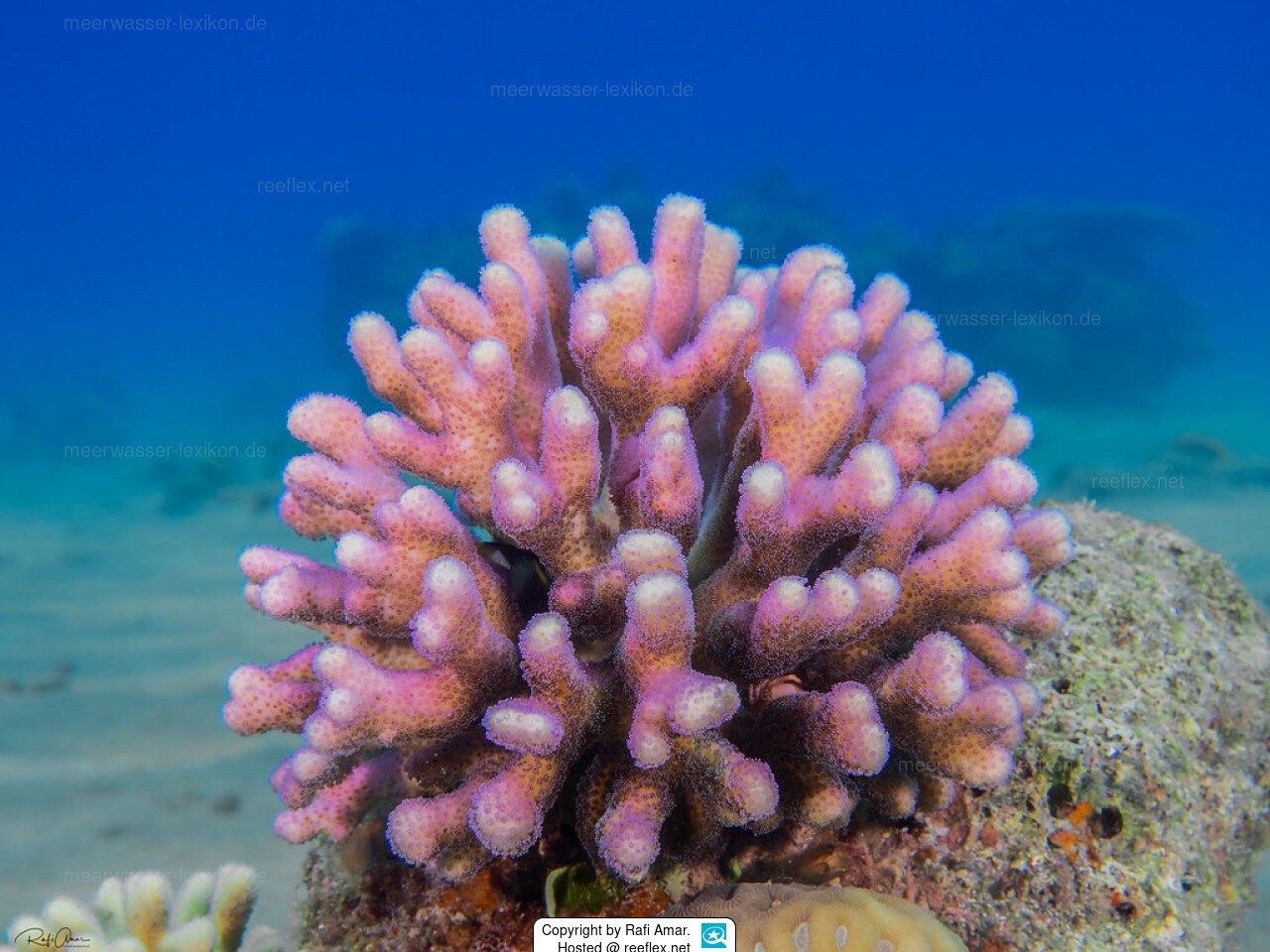Info
Similar Species: Stylophora kuehlmanni. See also S. danae, which has a prostrate growth-form and little development of corallite hoods, and S. pistillata, which can have fine branches but only in deep or turbid water
Synonymised names:
Anthopora elegans Gray, 1835 · unaccepted > junior subjective synonym
Madrepora subseriata (Ehrenberg, 1834) · unaccepted > superseded combination
Porites subseriata Ehrenberg, 1834 · unaccepted > superseded combination (basionym)
The care of small polyp stony corals was and is usually far more complex than that of most LPS corals and zooxanthellate soft corals due to the corals' requirements for water quality and lighting.
Therefore, only with the possibilities of skimming and live rock to produce a better water quality, as well as with better lighting and better calcium supply, the permanent keeping and reproduction came up.
Since keeping SPS corals became an achievable goal for many, zooxanthellate soft corals are hardly the main focus of most aquarists.
Identification of small-polyped and large-polyped stony corals is not always easy, despite really good works like Veron's book, Corals of the World, or the AIMS pages - especially since a definite identification should actually be made from the calcium skeleton.
One must also not forget that many animals in the aquarium do not look like they do in nature, and change their appearance due to current, light, as well as other influences.
However, it should be noted that the corals of the genus Stylophora are somewhat in the middle.
They are partly easier than many Montipora and Acropora species, although they should be given the same conditions.
Important parameters include:
Light:
All small polyp stony corals require very high light levels.
Therefore, they should tend to be located at the top of the tank with average lighting.
Heat/Cold:
Corals of the genus Stylophora will not tolerate water temperatures below 20 degrees or above 30 degrees for long periods of time.
Both cases they will acknowledge with bleaching.
Current:
They can tolerate quite a good current, though never have the pump outlet pointed directly at a coral.
Alternating, more turbulent flow conditions are best.
Water parameters:
Trace elements, (calcium 420-440 mg/L, magnesium 1100-1300 mg/L, KH below 8, strontium 8 mg/L). Water changes: at least 5% a week or 10% a month.
Water quality:
Permanently stable and clear water if possible, if necessary carbon filtration or ozonation is advisable to remove yellow substances.
The bucket comparison (white containers of the same size, in one freshly prepared water, in the other aquarium water) will quickly show you if your water in the aquarium is as clear as fresh water.
Acropora stony corals do not like to stand in a yellow broth.
Nitrate NO3:
Less than 5 mg/L.
Phosphate PO4:
Less than 0.1 mg/L better even in the range of 0.01 mg/L.
All the mentioned stony corals can be propagated by fragmentation.
Let's not forget the aspect of animal - and environmental protection that all coral breeders do by now.
The more offshoots, the less removals in nature.
Whereby also there in the years much has done.
So today corals from aquaculture are offered preferentially and sold as offspring.
Hint:
Strongly branched colonies and very variable in color.
Beside the color also the appearance is already very different.







 Rafi Amar, Israel
Rafi Amar, Israel














